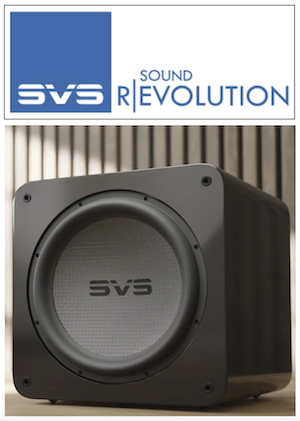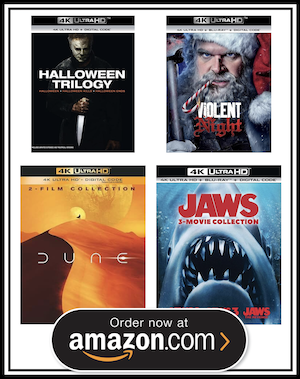LG Electronics Dominates the 2017 TV Shootout
(CE Week / AV NIRVANA)(July 13, 2017) Experts were in the house for this year’s 2017 TV Shootout (CE Week, New York). Gone were any meaningful audience driven results, ditched in favor of evaluations and – ultimately – awards decided by industry experts that specialize in reference video standards and technologies. Another industry powerhouse was also present, that being a true Sony studio monitor (the kind used by Hollywood content creators during mastering). Before you get any crazy ideas, it’s worth mentioning that particular monitor costs roughly $1,000 per inch of screen diagonal (or, in this case, $30,000). So, while it’s the true gold standard of modern 4K HDR video presentation, it’s also relative unobtanium.
This year’s crop of televisions wasn’t supplied by the stock room of the show’s originator (Value Electronics), instead nearly all were sourced from national retailers and shipped to New York City for the event. According to the Shootout’s moderator, Joel Silver, Sony’s XBR-65Z9D was the only television that couldn’t be purchased. That particular set was “critically backordered” nationwide, requiring organizers to ask Sony for a demo unit. Also, several days ago, I hinted that a special “surprise guest” would appear at this year’s competition. That guest was revealed as Westinghouse’s new WA65UFA1001 Smart 4K Ultra HDTV. Word on the street, so to speak, is that Westinghouse was a pay-to-play entrant. And while its participation was inconsequential to the event’s ultimate results, the Shootout would have benefited from a true budget contender (such as 2017 TCL model). No disrespect to Westinghouse or the market its television is designed to address, but the company’s entry spent a significant amount of time being exposed (rather than celebrated).
This year’s evaluation environment was a light controlled space on CE Week’s noisy show floor, which posed some audio issues for the event’s organizers. The space itself, however, was more than adequate for visually demonstrating the amazing capabilities of modern television technologies. Competing televisions were placed side-by-side across the front of the room. And while they weren’t officially evaluated until day two of the event, one could easily guess which televisions were assumed to be “in the running” just based on placement. From left to right, they were arranged in the following order:
- LG’s 65” OLED65E7P OLED 4K HDR Smart TV ($4,799 MSRP)
- Sony’s 65” XBR65A1E OLED 4K Ultra HD HDR Smart TV ($4,999)
- Sony’s 65” XBR-65Z9D LED LCD 4K Ultra HD HDR Smart TV ($5,499)
- Sony’s 30” BVM-X300 4K OLED Trimaster Reference Studio Monitor (approximately $30,000)
- Samsung’s 65” QN65Q9F QLED LCD 4K TV ($3,999)
- Vizio’s 65” P65-E1 XLED LCD Ultra HD HDR ($1,699)
- Westinghouse’s 65” WA65UFA1001 LED LCD Smart 4K Ultra HDTV (Price N/A)
It’s hard to argue with that arrangement, however Vizio’s P65-E1 should have taken the place of Sony’s studio monitor. The Vizio was, perhaps, the biggest surprise of the event and deserved a direct comparative position next to Sony’s flagship LCD panel. In addition, the Sony BVM-X300 is small enough for a cart (which would have allowed placement next to various models during critical evaluations of color and processing performance).
As mentioned, the panel of judges was a veritable who’s who of industry insiders, consisting of: Lee KIine (Head of the Technical Team, The Criterion Collection), Kevin Collins (Director of Mixed Reality Enablement, Microsoft), Brandon Yates (Partner at Yates and Parks Consulting), Vincent Pagliaro (Digital Technician), Kevin Miller (President of ISFTV and leading industry calibrator), and Joel Silver (Founder and President of the Imaging Science Foundation). Unfortunately, Sam Runco (Former CEO of Runco International and originator of aspect ratio controls) was unable to attend. He was replaced by Matt Murray (expert ISF Calibrator).
Joel Silver and Kevin Miller (along with SpectraCal’s Tyler Pruitt) were tasked with calibrating the competing televisions.
This year’s event was designed to issue three awards covering dark room (reference home theater), bright room (HDR), and streaming performance. The reason behind distinct award categories is quite simple: market reality. Evaluating televisions with pure reference content under the best lighting conditions doesn’t exactly represent how televisions are used in the real world. Most buyers view their TVs in brightly lit rooms and prefer streaming video. Kevin Miller confirmed that notion when he remarked: “most of my clients only stream content, they don’t even own a Blu-ray player.” Don’t forget, he services the upper-echelon of AV clientele.
That remark might read as blasphemous to a true home theater enthusiast, but the existence of High Dynamic Range (HDR) and Wide Color Gamut (WCG) more than make up for the loss of resolution experienced during UHD streaming. And that falls back on the very notion that 4K, itself, means very little to the human eye at normal seating distances (the video enhancements of HDR and WCG, however, mean a lot).
The Results
The judges analyzed televisions based on a number of categories, including contrast ratio, peak brightness, black level, color accuracy, color saturation, color volume, colorimetry, resolution, and motion artifacts. The analysis included evaluation of 4K UHD HDR material sourced from 4K Ultra HD Blu-ray discs and online streaming (reference material was uploaded to YouTube) under various lighting conditions.
The event announced the winners following Day Two deliberations and LG was awarded a clean sweep, winning all three categories of measured performance. This is the third consecutive year that an LG OLED panel has won the event.
My personal model favorites were LG’s 65” OLED65E7P (Dark Room and Light Room) and Sony’s 65” XBR65A1E OLED (Streaming). Here are few notes based on my impressions:
- Westinghouse’s WA65UFA1001 was never in the running (in any category) and had performance marred by poor color accuracy, greyscale error, artifacts, and some sort of baseline frame interpolation processing (which didn’t please my eyes); the panel occasionally displayed blue as purple. It also had some defective padding visible between the frame and panel, adding to an overall cheapness factor that was hard to shake.
- Samsung’s QN65Q9F, while decent, fell short when considering off axis viewing and black levels. It did, however, demonstrate the best native video processing for motion during test pattern playback. Overall performance was neither here nor there to my eyes. It’s a nice television, but doesn’t compare to the true heavy hitters.
- Vizio’s P65-E1 gets my vote as the best buy of the bunch. During a private conversation, one of the judging panelists told me it was “the best Vizio TV [he had] ever seen, easily beating the Vizio Reference Series television used in last year’s contest.” The P65-E1 is capable of vibrant color depth, good HDR performance, and surprisingly competitive black levels. Much like all of the LCD contestants, off axis viewing negatively impacted its picture quality.
- Sony’s XBR-65Z9D was a bit of a curiosity. This particular model was the only TV in the room capable of displaying detail above 1,000 nits (impressive but current content isn’t mastered above that level of brightness). It also carries over 600 local dimming zones, making for a level of dimming precision that’s exacting and accurate. I was still able to see a lightening of blacks around bright objects in extremely dark scenes, but its performance was ridiculously good for an LCD. This TV exceled at bright room performance and showed the best levels of detail for content with extremely dark scenes. That dark level detail strength, however, was tempered by overall black levels that couldn’t touch the Sony and LG OLEDs (there were times during demo comparisons that the ZD9’s blacks looked dark greyish). That trade off, for me, is a deal breaker, but I can understand why so many enthusiasts adore the Z9D.
- LG’s OLED65E7P and Sony’s XBR65A1E are world-beaters. The Sony uses an LG panel, which reduces performance differences to a matter of video processing capabilities. Both televisions looked ridiculously good, with infinite blacks and richly saturated colors. And while peak brightness outputs are less than that of the best LCD televisions, the offset of superior black level performance makes up for the difference. Overall native motion processing looked to be about the same, however Sony’s playback of comparative streaming media trumped LG with an image that was noticeably more detailed in dark scenes. The Sony’s native processing also resulted in better overall blacks during 4K UHD Blu-ray playback (the difference was rather small, but noteworthy). The LG, however, had better overall color, with flesh tones and whites that looked more accurate. My eye saw a slight blue push on the Sony panel that resulted in a mild wash of flesh tones and a blue tinge in whites (such as images of snow).
I’d happily own either the OLED65E7P or XBR65A1E, and imagine the noted differences would go unnoticed during normal use in a home. However, if I were forced to choose, the LG would be my pick.
- The X-Factor: Panasonic. I'm told that Panasonic is poised to re-enter the U.S. market sometime this fall. And much like Sony, Panasonic’s OLED TVs are using LG’s WOLED panels. An unnamed source hinted to me that Panasonic has an ace in the hole (an advanced processor) that’s going to blow the doors off the competition in the U.S.
True?
It’s possible. Remember Panasonic’s acquisition of Pioneer’s display segment in 2009? Technology resources acquired through that buy might actually pay serious dividends in short order. CEDIA 2017 could be a re-entry point for the former plasma champion, so stay tuned.
The Wrap
Television technologies have rapidly progressed since the first year of ho-hum 4K sets hitting the market; Rec709 and standard HDTVs simply look antiquated when compared to modern 4K sets displaying UHD HDR media. This is both exciting and frustrating, as the video industry is still pushing forward at a quick pace. We’re currently experiencing a great balance of performance within the P3 cinema color space, however BT 2020 (which encompasses a huge cross section of what the human can actually see) is just years away.
Yes, more changes are coming.
That leaves a big question for enthusiasts: buy now or wait? The answer is rather simple. If you’re planning on watching 4K HDR content, then buy now. The available 4K OLED technologies (not to mention visually stunning UHD HDR content) are worth the price of entry. However, if you’re only interested in watching standard Blu-rays or Cable TV, then you’re safe sticking with your tried and true HDTV (especially if it’s a late model plasma).
Last edited:











